Everything you need to know about kiwifruit, including different kiwi varieties, storage tips, kiwi nutrition information, and more!
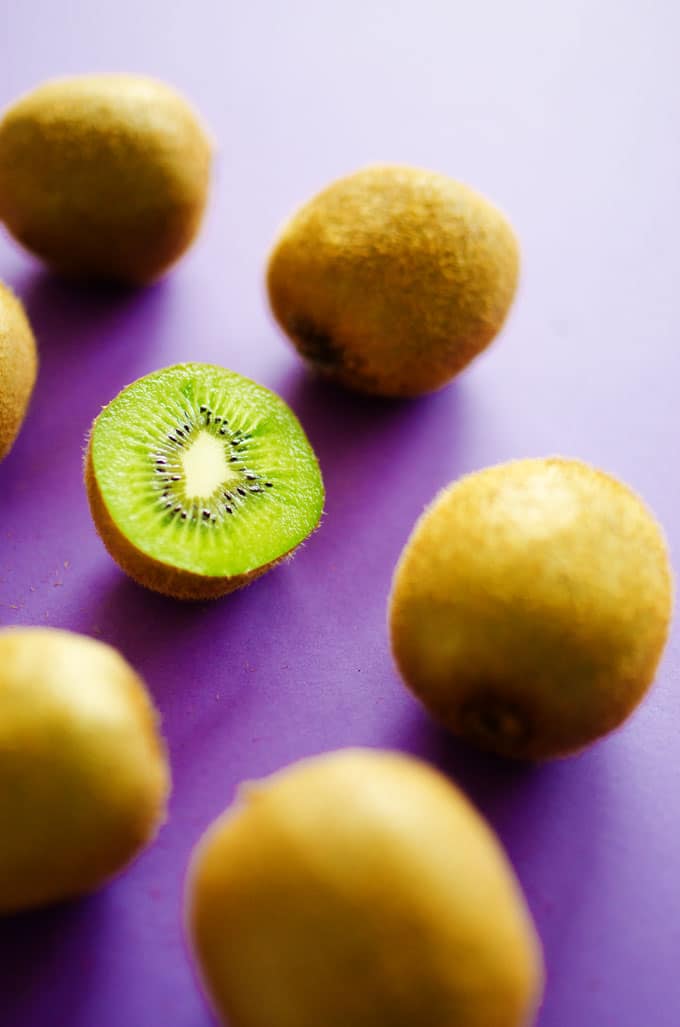
Let’s explore the bright green, vitamin C-packed world of kiwifruit (a.k.a kiwi) (a.k.a. Chinese gooseberries) (P.S. does anyone even call them Chinese gooseberries?)
Native to China, these peculiar fruits were first commercially grown in New Zealand, where they picked up the name “Kiwifruit”, and have since made their way around the globe and stampeded their way into my kitchen for this week’s ingredient spotlight.
Kiwis are absolutely packed with vitamin C (even more than an orange!) They’re also pretty acidic, making them a unique cooking ingredient for their ability to tenderize and digest proteins. This week we’ll be making a few sweet things, but also a savory kiwi infused dish that I’m so in love with and can’t wait to share (hint: KIWI TACOS).
Varieties of kiwifruit
There are a few types of kiwis you can expect to see in your market.
- Fuzzy kiwis: This family of kiwis includes the variety you’re probably most used to eating, being about the size of a large egg with a fuzzy brown exterior and bright green fruit.
- Kiwi berries: These are the size of a grape, with a fuzzless, smooth skin and the same bright green interior.
- Golden kiwi: These have a golden flesh that’s sweet and a bit tropical tasting. Due to a shorter shelf life, these are not as commercially available (though I’ve spotted them from time to time in my local grocery!)
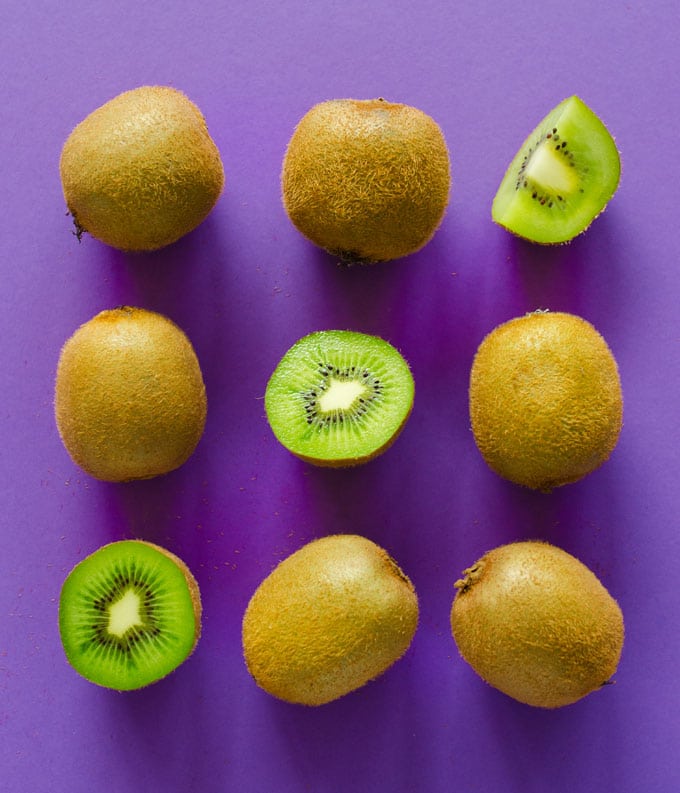
How to select and store kiwifruit
Choose fragrant, slightly soft fruits. Harder fruits will be more astringent and sour. Kiwis will continue to ripen after you buy them, so if you want to ripen them faster, store them in a paper bag at room temperature. To slow down ripening, store your kiwifruit in the fridge.
Kiwifruit nutrition information
Kiwis have a host of vitamins and minerals. Here is the nutrition information for kiwi (per 1 cup fresh kiwi (177 g)).
- Calories: 108
- Carbohydrates: 26 g
- Fiber: 5 g, 21% Daily Value (DV)
- Protein: 2 g
- Fat: 1 g
- 237% DV of Vitamin C: A water-soluble vitamin that acts as an antioxidant to fight against potentially damaging free radicals (molecules with unshared electrons that float around wreaking havoc) and an important cofactor in collagen synthesis.
- 89% DV of Vitamin K: A fat-soluble vitamin that allows for activation of enzymes in the clotting cascade, which is responsible for blood clotting. Also builds bone by modifying osteocalcin so that it may bind calcium, thus building the bone matrix.
- 13% DV of Vitamin E (a.k.a Tocopherols and Tocotrienols): A fat-soluble antioxidant that fights against potentially damaging free radicals from reacting with oxygen when fat is metabolized.
- 11% DV of Folate: (Vitamin B9): A water-soluble vitamin that helps make DNA & RNA and metabolize amino acids.
Ready to dig in? Try some sliced kiwi on a Watermelon Pizza, or go savory with this Kiwi Salsa!
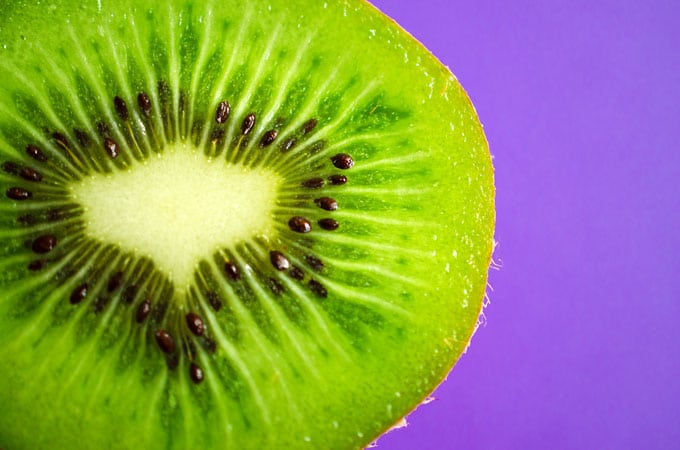

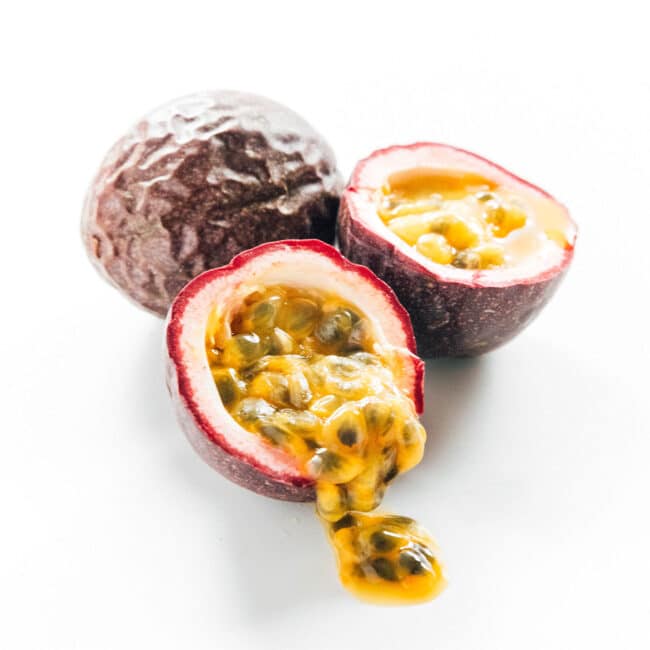
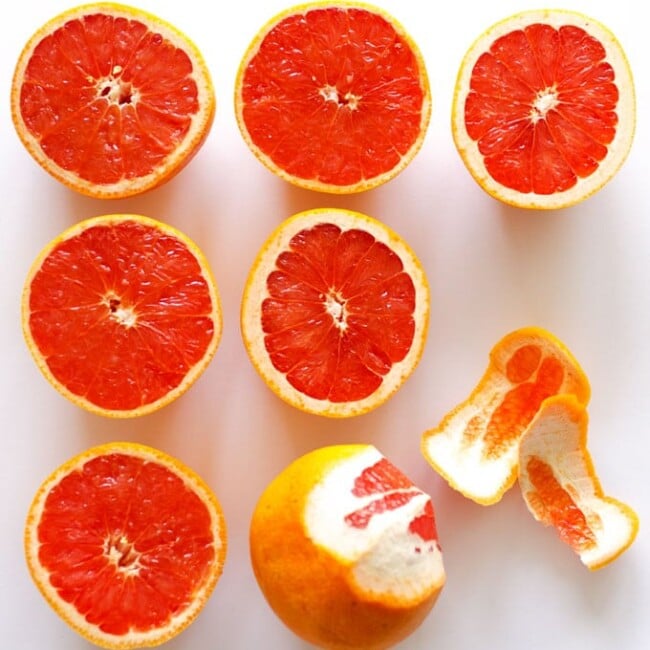
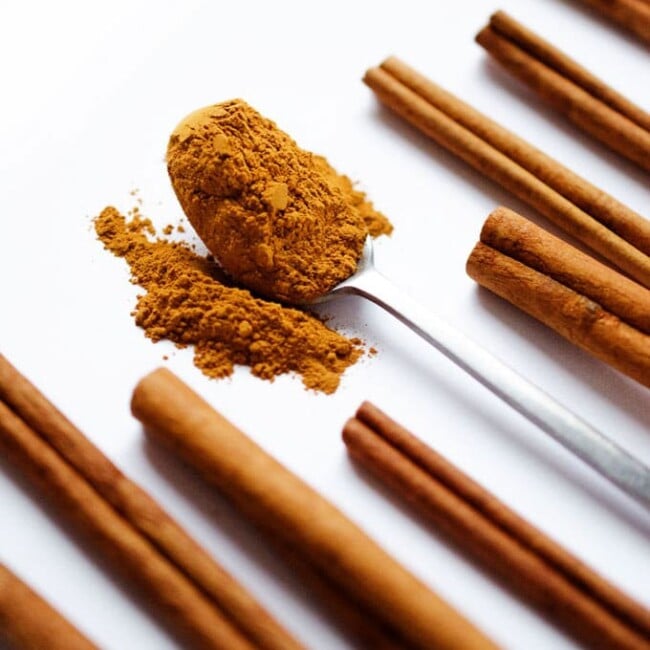
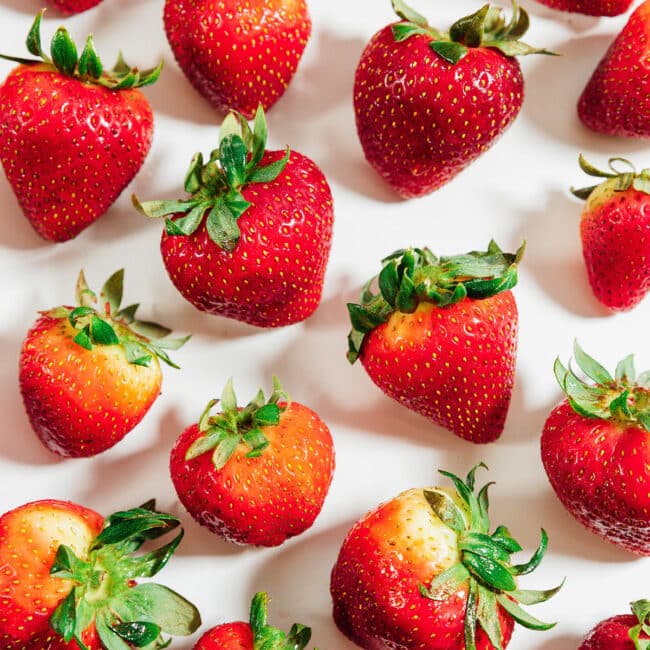
Anna Rando says
This year we have our first crop of Kiwifruit. We are wondering do they fall off the vine when they are ready, as we do for Fejioas and passionfruit? Or do we pick them and how do we know when they are mature enough to pick.
We know to pick apples and pears when the seeds inside have changed from white to brown.
So how about Kiwi Fruit?
what is the tell tale sign of perfect maturity?
Sarah says
The softness test! Hold the kiwi in your palm and gently press. If it gives a little, it should be ripe. Rock hard kiwis still need ripening.
Bill says
I can not find the name of my kiwi. It is a tree and not a vine. The fruit is smooth skinned and green. The fruit looks like three balls that have been smushed together. The fruit is about the size of an apple. I thought it could be issai artic, but no it is different.
Robyn says
Last spring I had many little fruits growing but they disappeared before I could get them.
What happened to my fruit? And how to prevent this year.
I live in maine and have male and female kiwiberries.
Sarah Bond says
I’m honestly not sure about the gardening aspect of kiwi fruit! We’re more on the cooking side of things. Sorry about that! (But sounds like maybe a critter got to them?)